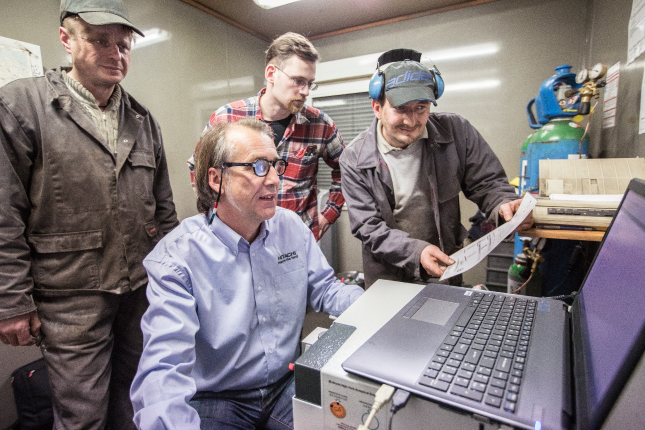Using an optical emission spectrometer (OES) during the foundry melt process lets you keep a complete picture of the exact chemical composition of the materials you are producing. It also produces a lot of data.
Getting the best insight from this data is all about knowing the best way to analyse and manipulate it. Luckily, Hitachi High-Tech’s range of OES analyzers give operators powerful reporting tools as well as fast and accurate analysis.
Here are some of the best ways to drill down into your spark spectrometer data and drive growth and productivity in your business.
Connectivity, storing and sharing
Our range of OES analyzers come with control software packages WASlab and SpArcfire, which are based on the latest Windows operating system. This gives operators some state-of-the-art tools when it comes to connectivity, data storage and distribution.
With both network connection and optional Wi-Fi available, data can easily be stored and shared in a range of formats including CSV, PDF and text files. Being able to see your data in a format that suits you can be a huge benefit when dealing with a lot of it, so make sure that you choose the one that works best for you. From there, you can store it on an SQLite database and you will soon have the option of using our ExTOPE Connect data cloud service.

Sample identification
Properly identifying your samples is essential. To make the task a little easier, you can adapt the sample ID to more closely suit your needs by automating some features.
A good starting place would be:
You should also think about setting up some predefined lists so that you can more easily scroll through a selection of fields such as operator names or customer/supplier lists. Another popular time-saver is setting upgrades for a comparison analysis concerning the limits and tolerances of preselected grades. To make this easy to manage, your previous IDs will be kept as defaults.
Grade identification
Every Hitachi High-Tech OES analyzer comes with the market’s most comprehensive GRADE Database. We recommend that you take some time to create some tailor-made grade libraries to suit your applications. This will make the process of checking if melt material meets a specified grade (or whether it needs any additional material) as quick as a glance.
Charge correction
Working out what adjustments you need to make if your melt material isn’t hitting the targeted grade can be a long-winded and complicated affair. We offer an optional charge correction software package that can take on the job of calculating the most cost-effective solution for you.
Reporting
The way you report your data is an important starting point part for any analysis. Listing data in a dense, unstructured list is going to seriously hamper your ability to pull out actionable insights. Luckily, both our software comes with report and certificate creation tools, meaning you can easily present data in a way that works for you.
Statistical process control
There are also ways to make the statistical process control (SPC) easier to manage. SPC software enables you to collect, maintain, evaluate and archive your measurement data for production and control samples. Be 100% prepared for audits by monitoring your process at every stage and by filtering, sorting and preparing analytical data for reports and certificates.
Creating the optimum analysis solutions for foundries all over the world is about more than creating the most effective and easy to use OES analyzers. Over 45 years, Hitachi High-Tech has also been providing the best ways for companies to turn their analysis data into insight that adds value to their operations. Our expert team is always happy to help you get the best out of your analyzer, especially when it comes to crunching the data.
For more information on the Hitachi High-Tech range of OES analyzers and book a demo, contact a member of our team today.
Find out more